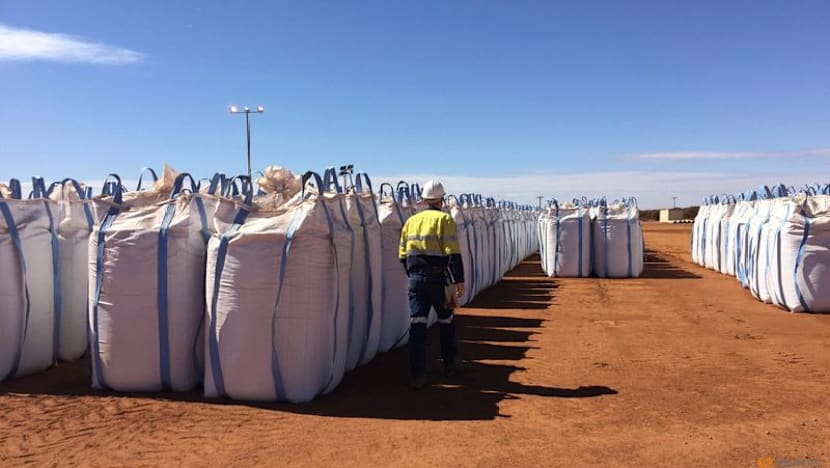World
Malaysia Leverages Rare Earths and Chips for Economic Growth

KUALA LUMPUR: In a significant move for Malaysia’s economy, Chinese President Xi Jinping visited the country in April 2023, marking his first trip in 12 years. This visit, which occurred shortly after US President Donald Trump announced new tariffs, symbolized China’s intent to strengthen its relationship with Malaysia. Both nations signed 31 memorandums of understanding covering diverse areas, including trade, investments, and even panda research. Most notably, Johari Ghani, the caretaker Minister of Natural Resources and Environmental Sustainability, later revealed that China had offered to assist Malaysia in developing its rare earth processing capabilities.
Unlocking Economic Potential with Rare Earths
The importance of rare earth elements has surged in recent years due to their essential role in technology such as smartphones, electric vehicles, and semiconductor manufacturing. China currently dominates the rare earth market, maintaining a near-monopoly in refining and processing. This dominance has been leveraged in international trade negotiations, particularly with the United States.
Malaysia is poised to benefit significantly from its own rare earth deposits, estimated at 16.2 million metric tonnes and valued at approximately USD 175 billion. This positions the country among the top five globally in terms of reserves. Gaining access to Chinese technology for the complex separation processes involved in rare earth production could provide Malaysia with a critical advantage in global markets. The intricate processes often involve up to 100 steps protected by trade secrets, making expertise in this area extremely valuable.
China’s early investment in rare earth technology, dating back to the 1950s, has created a robust supply chain that is difficult for other nations to replicate. Between 1950 and 2020, China filed over 25,000 patents related to rare earths, while the United States lagged behind with fewer than half that number. Currently, China accounts for about 60 percent of global rare earth production. If Malaysia succeeds in its cooperation with China, it could establish a dual-track rare earth ecosystem. This would involve leveraging both Chinese technology and the existing Australian firm Lynas, which operates a rare earth processing plant in Pahang.
Malaysia’s Strategic Role in Global Semiconductor Supply
Alongside rare earths, Malaysia has emerged as a crucial player in the global semiconductor market, particularly in backend assembly, testing, and packaging. The COVID-19 pandemic highlighted Malaysia’s importance when lockdowns disrupted production for major automotive companies like Toyota and Ford. Currently, Malaysia accounts for 13 percent of global backend chip production and around 20 percent of US semiconductor imports.
Geographically, Malaysia holds a strategic position at the Straits of Malacca, a vital trade route through which 25 percent of the world’s traded goods pass annually. Major ports like Port Klang and Port Tanjung Pelepas are well-equipped to support increased trade volumes, further enhancing Malaysia’s attractiveness as a manufacturing hub. The potential for higher tariffs and trade volumes is already driving Malaysia’s largest initial public offering (IPO) to date.
According to The Economist, Malaysia is likely to emerge as a key beneficiary of the shifting global trade dynamics resulting from Trump’s tariff policies. The country’s favorable tariff differentials and reduced reliance on American demand could accelerate its industrial upgrade, particularly in high-value digital services.
International leverage often hinges on which party requires the other more. Malaysia’s wealth of natural resources, combined with strategic policymaking and diplomacy, positions it uniquely in a competitive global landscape. As the country navigates through these opportunities, it holds the potential to become a significant middle power in the region.
The future is bright for Malaysia, as the nation seeks to capitalize on its rare earth and semiconductor sectors. The combination of its resources, location, and growing technological capabilities suggests that Malaysia is on the cusp of a transformative economic era.
-

 Business5 months ago
Business5 months agoKenvue Dismisses CEO Thibaut Mongon as Strategic Review Advances
-

 Lifestyle4 months ago
Lifestyle4 months agoHumanism Camp Engages 250 Youths in Summer Fest 2025
-

 Sports4 months ago
Sports4 months agoDe Minaur Triumphs at Washington Open After Thrilling Comeback
-

 Sports5 months ago
Sports5 months agoTupou and Daugunu Join First Nations Squad for Lions Clash
-

 Top Stories5 months ago
Top Stories5 months agoColombian Senator Miguel Uribe Shows Signs of Recovery After Attack
-

 World5 months ago
World5 months agoASEAN Gears Up for Historic Joint Meeting of Foreign and Economic Ministers
-

 Health4 months ago
Health4 months agoNew Study Challenges Assumptions About Aging and Inflammation
-

 Business5 months ago
Business5 months agoOil Prices Surge Following New EU Sanctions on Russia
-

 Entertainment4 months ago
Entertainment4 months agoDetaşe-Sabah Violin Ensemble Captivates at Gabala Music Festival
-

 Entertainment4 months ago
Entertainment4 months agoBaku Metro Extends Hours for Justin Timberlake Concert
-

 Top Stories5 months ago
Top Stories5 months agoRethinking Singapore’s F&B Regulations Amid Business Closures
-

 Business5 months ago
Business5 months agoU.S. House Approves Stablecoin Bill, Sends to Trump for Signature









